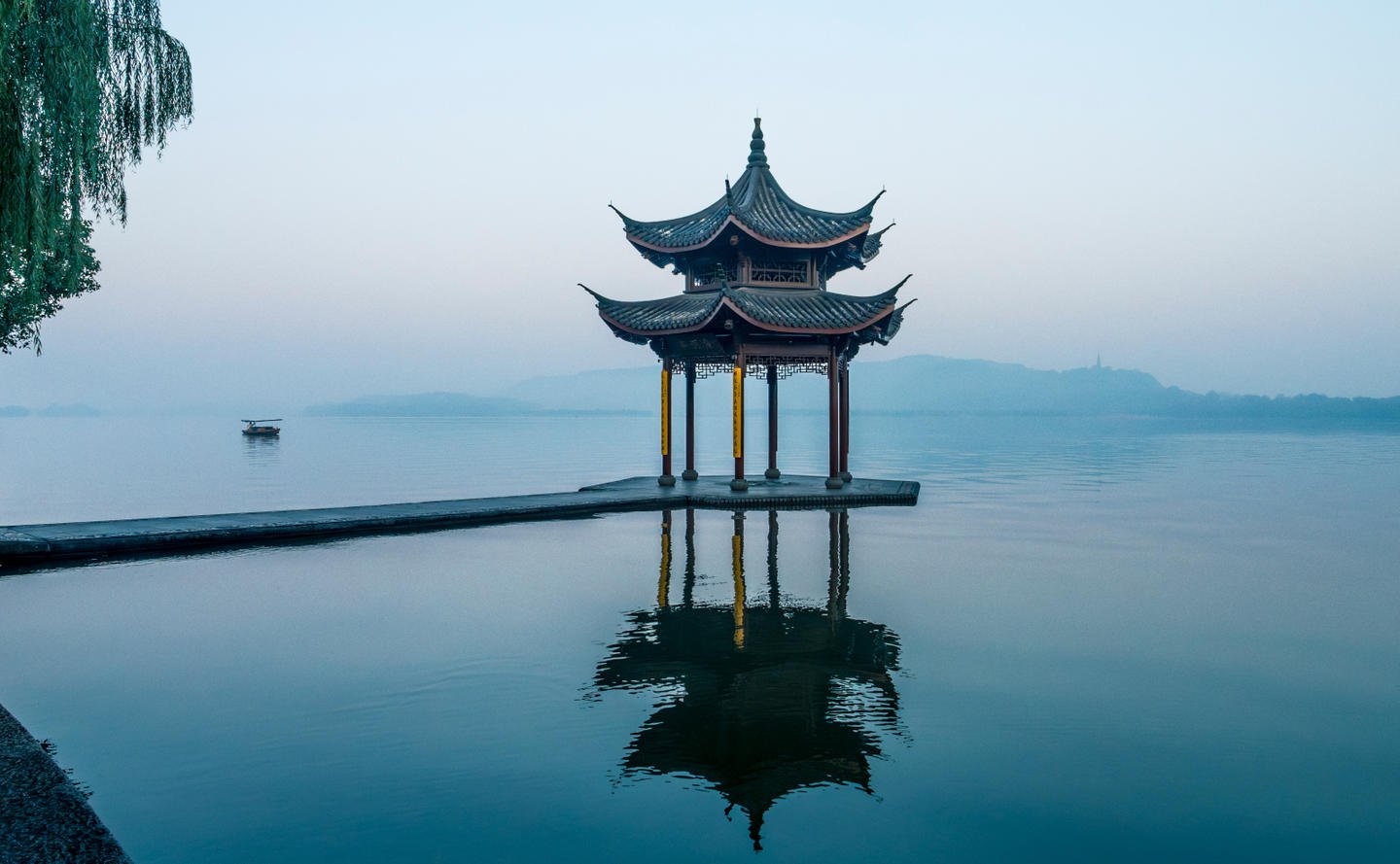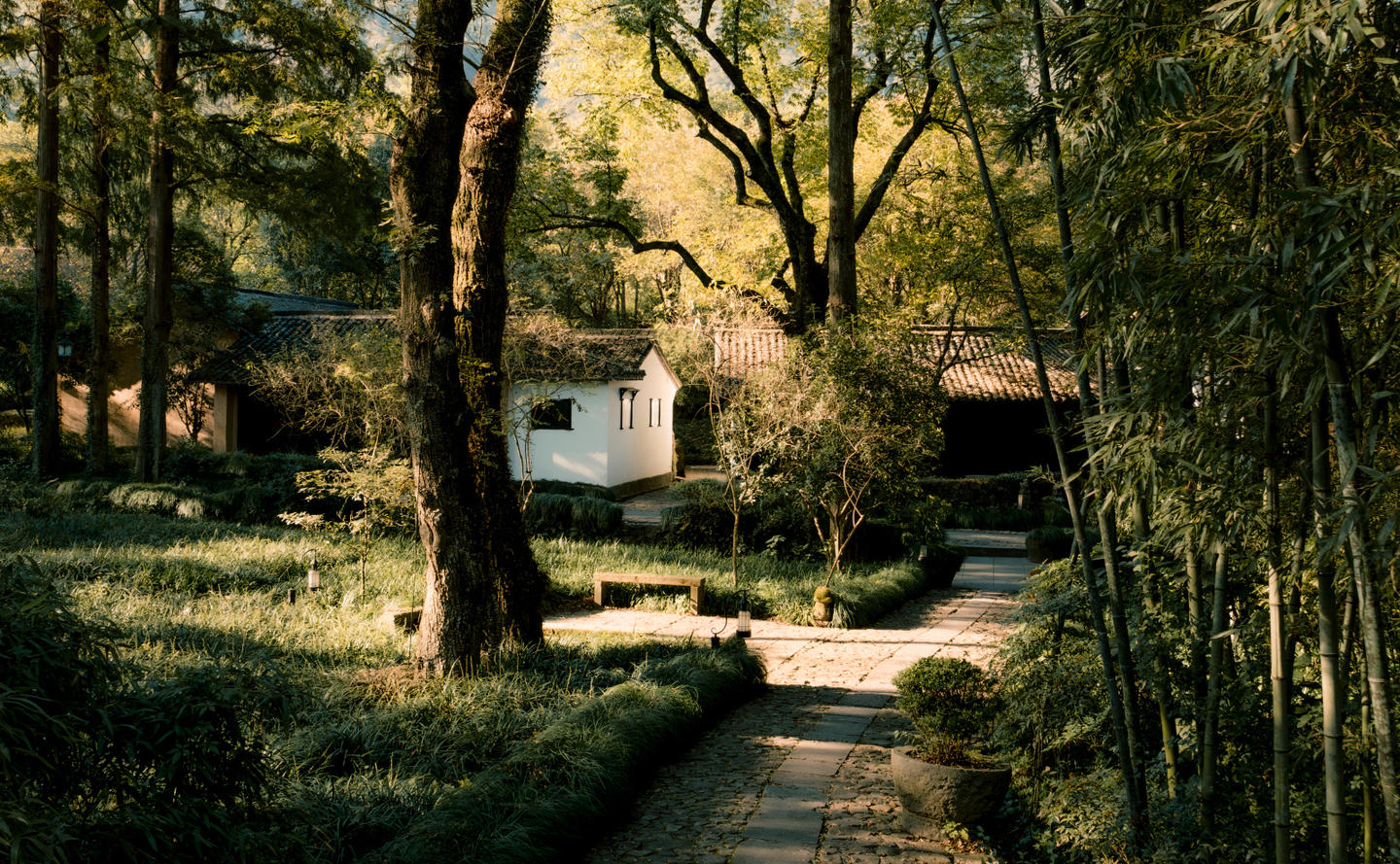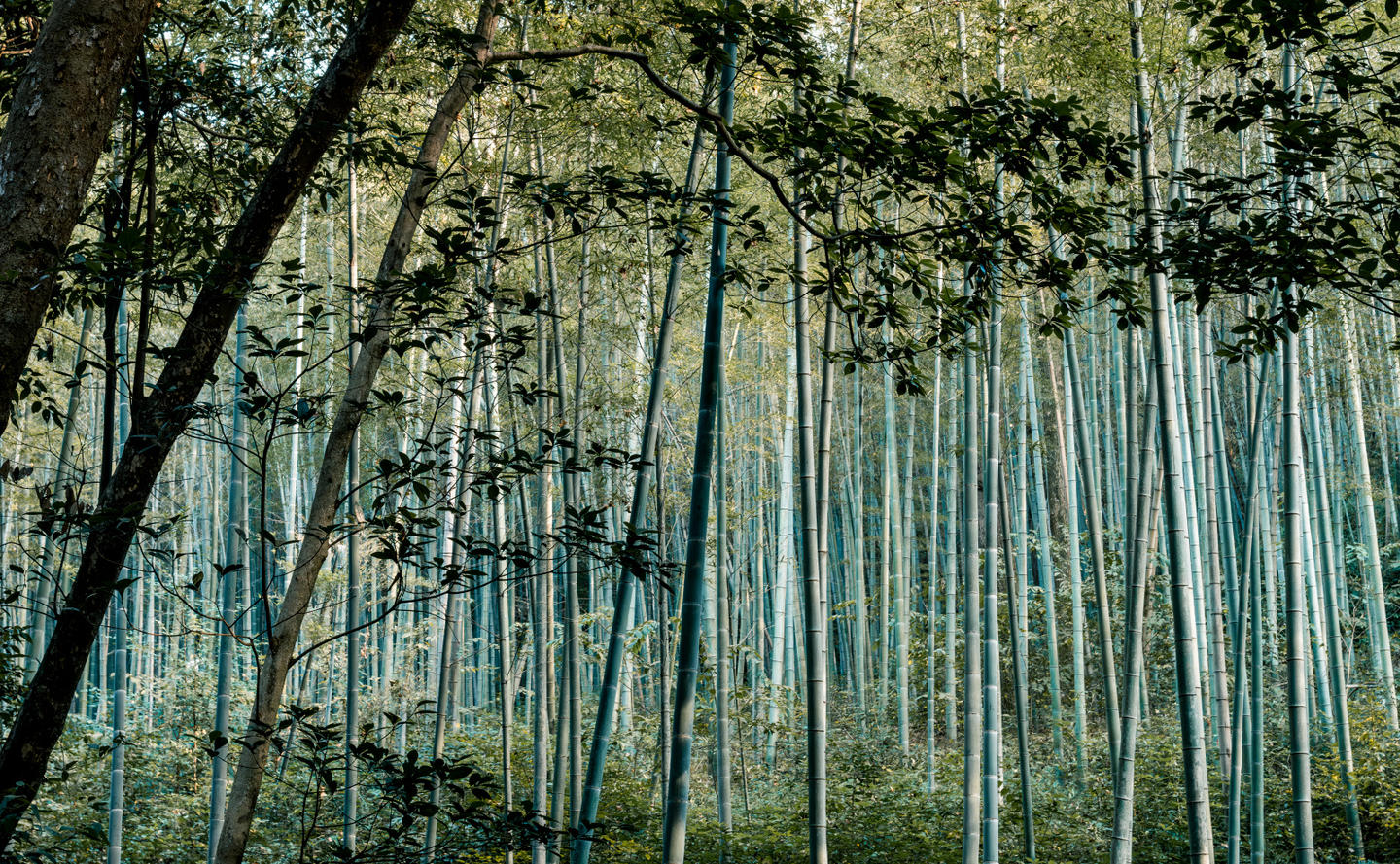Journeys Await
As the New Year approaches, Aman destinations across the globe await discovery.
Photography by Jerome Galland
Words by Lauren Ho
Amanfayun, Hangzou, China
It’s dawn in Hangzhou, where a subtle pastel wash from the sunrise is beginning to illuminate the hazy sky. Here, standing on the shore of West Lake - the temperature a crisp five degrees celsius - the air is still, the silence interrupted only by the tentative chirrup of early morning bird song. The surface of the lake is mirror flat, like a silent canvas.

The allure of Hangzhou is in the mesmerising beauty of West Lake. And in this moment, as the soft glow of the early morning light awakens the landscape with a renewed vibrancy, I understand. Located along the western fringes of the city, cradled by a swell of rolling hills, it’s believed that the origins of the lake can be traced back over a millennium to the Song Dynasty. More than just a body of water, the lake is the cornerstone to Hangzhou’s narrative, intricately woven in the city’s rich history, cultural legacy and enduring significance.
It’s mid-winter when I visit. Along the lake’s eastern edge, Hangzhou’s modern skyline - a reminder of the city’s dynamic blend of tradition and progress - gracefully rises in harmony with the surrounding hills, their undulating slopes carpeted with terraced tea fields that are laced with stone pathways and dotted with traditional cottages.


From this poetic scene, Amanfayun emerges like an ancient scroll painting, offering a visual journey through Hangzhou’s culture, history and spirituality. Ensconced in a deep river-cut valley of tea plantations and soaring emerald mountains, the resort takes up residence in an ancient 800-year-old former tea village from the Yuan Dynasty, which has been carefully restored. Anchored by Fayun Path, the village's main pedestrian thoroughfare, the property unfolds captivatingly over weathered stone bridges, arched gracefully over babbling brooks, and meandering moss-covered cobblestone paths, which lead to clusters of traditional courtyard houses that now accommodate the hotel’s 46 rooms and suites. Bamboo leaves cast a rhythmic dance of shadows across buildings with sloping clay-tiled roofs; ornate lattice windows filter rays of sunlight onto worn stone floors; and exposed wooden beams and thatched ceilings provide a rustic backdrop for modern pared back interiors of Ming-inspired furnishings.



During my time in Hangzhou, I learned just how important these observances are to shaping the cultural fabric of China. Ceremonies like Chinese New Year, and the Qingming and Mid-Autumn festivals are deeply embedded in Chinese identity, while Buddhism, Taoism and philosophies like Confucianism are woven into daily life. Temples play a significant role as cultural anchors, where people go to reflect, seek solace, and celebrate milestones. Amanfayun, as it happens, lies within a pilgrimage circuit of seven significant Buddhist temples, all within walking distance from the resort.
The next day, at 5:30am, a short buggy ride through the resort’s grounds brings me to Yongfu Temple. I am here to join a Buddhist morning class and in the quiet predawn darkness, the city still slumbering, I navigate the winding paths, guided only by the moonlight. A solitary monk cloaked in saffron robes welcomes me with a nod and together we walk silently through the temple grounds to the meditation hall, which emerges like a silhouette against the faint light of the impending dawn. Inside, the air thick with the woody fragrance of burning incense, I take my place at the back and observe as the monks, standing in perfect alignment, wait for the rhythmic beat of the wooden fish drum to signal the start of the class. As the resonance of their voices fill the hall, the repetitive cadence of the chanting, which carries with it the essence of centuries of Buddhist teachings, is delivered with meticulous precision, creating a contemplative atmosphere accompanied by an interior adorned with muted colours and subtle ornamentation.


Later on, the gentle morning sun casts a soft glow on the rows of simple wooden communal tables in the dining hall. Here, a quiet reverence fills the air as the monks gather silently for breakfast, the only sounds the gentle shuffling of robes and the clinking of chopsticks against porcelain dishes. Steam rises from bowls of congee and simple vegetarian stir-fried noodles, filling the space with subtle aromas as the monks move with practised grace, their eyes downcast and their minds attuned to the present moment, with a shared understanding that the simplicity of a silent breakfast is a time for reflection, gratitude and mindfulness.
With a light drizzle beginning to fall, I seek refuge in a nearby teahouse, tucked away amid the woods, close to Lingyin Temple. As I creak open the ancient door, the interiors unfold like a time-worn storybook, the simple lines and graceful curves of the Ming era furniture polished to a rich sheen and the walls adorned with faded calligraphy scrolls and tapestries.
Next to me, a group of women sit crowded around a worn table, where a mahjong match is in full swing. A tile-based game that started during the Qing Dynasty in the mid 1800s, mahjong is deeply rooted in Chinese culture. Behind me, an English-speaking customer, Mrs. Li explains that divination and fortune play a large part in mahjong with many symbols and rituals relating to the luck of the players in the game. The colour red, for example, which adorns many of the intricately engraved tiles, is associated with luck and prosperity and the number four - pronounced ‘si’ in Mandarin - sounds similar to the word ‘death’, which is considered unlucky. As the game unfolds, I sip my tea and learn more about the importance of symbolism and rituals in Chinese culture.


It’s late afternoon when I arrive back at Amanfayun, the sky is still thick with creamy stacks of cumulus clouds. Walking along Fayun Path on my way to my suite, I take a detour to Fayun Place, the cultural heart of the resort. Housed in a two-storey building - which dates to the 1800s - the centre is a tranquil haven with a library of English and Chinese books. Daily afternoon tea, and a programme of evening musical performances, talks by historians on subjects from Buddhism to ancient Chinese medicine, and classes on Chinese arts, like paper cutting or rubbing are held here on a rotating basis. At a table in the centre of the room, a master calligrapher is sitting serenely before a pristine sheet of rice paper. He nods to me and I watch as his hands move with grace, commanding the brush to dance across the paper, each stroke a deliberate marriage of precision and intuition. As a novice, the brush feels weighty and awkward in my hand, my strokes clumsy. But I learn that this is not just about acquiring a skill; it is a transformational experience, a meditation, and an intimate conversation with the essence of Chinese cultural expression.


The next morning, in the warmth of the sunlight streaming through the floor-to-ceiling windows at Amanfayun’s main restaurant and bar, I feast on a traditional breakfast of shrimp dumplings, steamed pork buns, congee and crispy scallion pancakes. Outside, the reflection ponds glisten, mirroring the surrounding greenery- a serene start to the day that continues with a walk through the bamboo forest, which sprawls beneath the foothills of Wuyun Mountain on the southwestern side of West Lake. Closing my eyes, I take a deep breath, inhaling the crisp, earthy fragrance and listen to the whispers of the breeze through the leaves. Created during the Qing Dynasty as a private sanctuary for the Emperor and his family, this forest embodies the importance of bamboo in Chinese civilization that extends far beyond its visual association and botanical identity, as a symbol of strength, flexibility, and resilience, influencing art, literature and philosophy throughout history.

From the Southern Song Dynasty’s establishment of Hangzhou as a capital, to the Ming and Qing Dynasties’ contribution to its cultural richness, each dynasty has left its mark. Yet it was the ongoing construction of the Grand Canal that solidified the Empire as a political and commercial powerhouse, serving as a vital artery for the movement of goods, grain and raw materials, alongside supplying rice to the population. The earliest and longest man-made waterway in the world, dating back 2,400 years, it extends 1,800 kilometres from Beijing and was completed in 1293. Along its course, several picturesque towns emerged as trading hubs and transportation centres, often referred to as the ‘Venices of the East’. Today, they serve as living museums, offering a glimpse into China’s rich heritage.
I find myself standing along the mist-kissed waters in Wuzhen of the West Lake. Before me, a fisherman in a conical hat, lazily paddles his wooden rowing boat, gently gliding under an ornate stone bridge and past the row of traditional houses that line the waters’ edge. I trace the steps of those who had come before, imagining the town alive with the bustle of activity as merchants, travellers and locals engaged in commerce and trade. Crossing the landmark “Bridge within a Bridge” - named because two ancient bridges can be seen through the arch of the other - I pause for a moment and observe its perfectly mirrored reflection in the water below. Meandering deeper into the town, the streets, paved with uneven cobblestones, guide me through a labyrinth of narrow pathways and ancient alleys.
Against the melodic strains of a traditional Chinese orchestra, the haunting notes of ancient string instruments flowing from inside the theatre, I amble onwards along the worn cobblestone watching the fishermen meander through the narrow waterways and disappear through the mist.


In Hangzhou, you can’t help but relax; its scenic beauty alone, inducing a therapeutic calmness. Willow-lined paths invite unhurried strolls along the tranquil waters of West Lake, conversations linger in cosy tea houses, and temples offer sanctuaries for quiet reflection, in a slow-paced rhythm that embraces a mindful, contemplative way of life. This sense of wellbeing permeates Amanfayun where, like stepping into a parallel universe, the light seems brighter, the air fresher, the lush greenery more vivid.
On my last morning, I rise with the sun, catching a glimpse of it emerging from behind the landscape of clay tiled roofs. In a tranquil courtyard, a group of elderly guests are practising the art of Tai Chi, their slow, deliberate movements flowing seamlessly from one to the next. I begin with a Buddhist meditation session in a quiet studio close to Yongfu Temple, with Master Lei Ming. Sitting comfortably with my legs crossed, I close my eyes and focus on my breath, letting my thoughts pass without attachment, directing my attention inwards until gradually, a sense of clarity emerges and I feel a profound connection to the present moment.
I spend the afternoon in the Bath House, soaking in a large wooden circular tub filled with an infusion of flower petals, tea leaves and other botanicals. As the steam rises around me, I contemplate my time in Hangzhou. Marco Polo once described it as ‘the City of Heaven’, a romantic portrayal that only adds to its allure. It’s a place where ancient temples and pagodas harmoniously coexist with contemporary skyscrapers, engaging in a dialogue each enriching each other. It’s a place that has the ability to embrace the challenges of modernisation while preserving its cultural heritage, where historical sites are not just relics, but integral components to everyday life.


West Lake remains a sanctuary of tranquillity and, for me, the heart of Hangzhou’s soul, capturing the very essence of the city. And so, on my final evening, long after the sun had set, I make my way back to the lake. I travel on a simple wooden rowing boat guided by the soft light of a lantern to Xiaoying Island, which sits in the middle of the water, just a few minutes from the main shore. At this time of the night, the lake is quiet, the silence broken only by the gentle lapping of the water against the boat. Here, floating on the middle of the lake at night, you can truly appreciate its ethereal beauty: surrounded by lush greenery, the gently illuminated pagodas and bridges and then Hangzhou’s brilliant skyline reflect flawlessly on the mirror-flat waters, the scent, even here, of fallen leaves. Arriving on the island, I stand in silence in the crisp winter embrace, and absorb the captivating scene beyond. In this quietude, surrounded by this enchanting scene, I understand Hangzhou’s allure. The poetic simplicity of its landscapes and the enduring charm of its cultural legacy unfolds like a classical painting that will continue to inspire artists and writers for centuries to come.


Jérôme Galland is a French photographer specializing in travel and architecture. Renowned for his story-telling and textured imagery that transport and inspire, his work has featured in publications such as Architectural Digest, while collaborations include luxury designers such as Hermès and Pierre Yovanovitch.
Lauren Ho is a South African-born freelance travel journalist and author who travels the globe covering luxury travel, design and architecture. She is the European Academy Chair for the World's 50 Best Hotel Awards, the contributing travel editor at Wallpaper* and Country & Town House, and regularly contributes to a range of international publications including Condé Nast Traveller, Harper's Bazaar, House & Garden, Robb Report and the Telegraph among others.